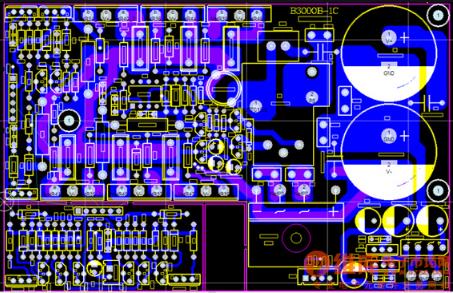1. The printed circuit board in PCB design is mainly composed of pads, vias, mounting holes, wires, components, connectors, filling, electrical boundaries, etc. The main functions of each component are as follows:
? Pad: A metal hole used to solder the pins of components.
? Via: A metal hole used to connect the pins of components between layers.
? Mounting hole: used to fix the printed circuit board.
? Wire: The copper film of the electrical network used to connect the pins of the components.
? Connectors: components used to connect between circuit boards.
? Filling: Copper coating for ground wire network, which can effectively reduce impedance.
? Electrical boundary: used to determine the size of the circuit board, all components on the circuit board cannot exceed the boundary.
2. The common layer structures of printed circuit boards include single layer PCB (Single Layer PCB), double layer PCB, (Double Layer PCB) and multilayer PCB (Multi Layer PCB). A brief description of these three layer structures as follows:

(1) Single-layer board: a circuit board with copper on one side and no copper on the other side. Usually components are placed on the side without copper, and the side with copper is mainly used for wiring and soldering.
(2) Double-layer board: a circuit board with copper on both sides, usually called the top layer on one side and the bottom layer on the other side. Generally, the top layer is used as the surface for placing components, and the bottom layer is used as the welding surface for components.
(3) Multilayer board: It is a circuit board that contains multiple working layers. In addition to the top and bottom layers, it also contains several intermediate layers. Usually the intermediate layers can be used as wire layers, signal layers, power layers, ground layers, etc. The layers are insulated from each other, and the connection between the layers is usually achieved through vias.
3. The printed circuit board includes many types of working layers, such as signal layer, protective layer, silk screen layer, internal layer, etc. The functions of each layer are briefly introduced as follows:
(1) Signal layer: Mainly used to place components or wiring. Protel DXP usually contains 30 middle layers, namely MidLayer1~Mid Layer30. The middle layer is used to arrange signal lines, and the top and bottom layers are used to place components or deposit copper.
(2) Protective layer: It is mainly used to ensure that the parts of the circuit board that do not need to be tinned are not tinned, so as to ensure the reliability of the operation of the circuit board. Among them, Top Paste and Bottom Paste are the top solder mask and the bottom solder mask respectively; Solder and BottomTopSolder are the solder paste protection layer and the bottom solder paste protection layer, respectively.
(3) Silk screen layer: mainly used to print the serial number, production number, company name, etc. of the components on the printed circuit board.
(4) Internal layer: Mainly used as signal wiring layer. Protel DXP contains 16 internal layers.
(5) Other layers: mainly include 4 types of layers.
Drill Guide (drilling azimuth layer): mainly used for the position of drilling holes on the printed circuit board.
Keep-Out Layer: Mainly used to draw the electrical border of the circuit board.
Drill Drawing (drilling drawing layer): Mainly used to set the drill shape.
Multi-Layer (multi-layer): Mainly used to set multi-layer layers.
4. In the PCB layout design, the so-called component packaging refers to the relationship between the appearance and the position of the solder joints displayed on the circuit board when the components are soldered to the circuit board. It not only plays the role of placing, fixing, sealing, and protecting the chip, but also a bridge between the internal world of the chip and the outside world. Different components can have the same package, and the same components can also have different packages. Therefore, when designing a printed circuit board, it is necessary to know not only the name and model of the component, but also the package of the component. Commonly used package types include in-line package and surface-mount package. In-line package refers to inserting the pins of the component through the pad via hole and then soldering, while the surface-mount package refers to the introduction of the component. The connection between the pin and the circuit board is limited to the pads on the surface of the circuit board.